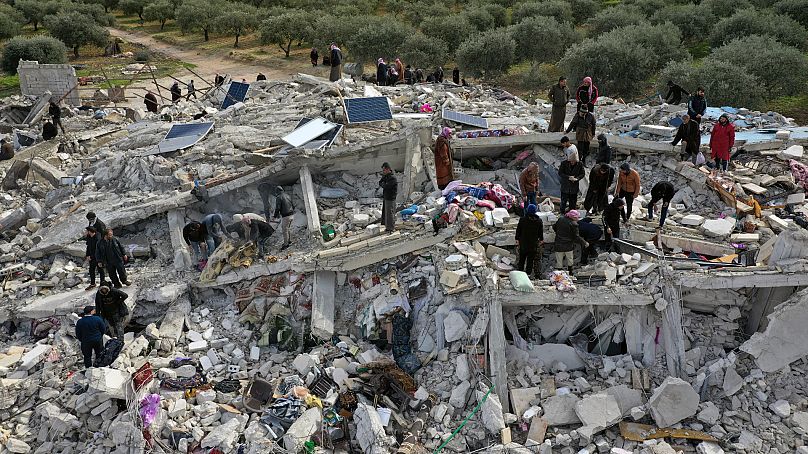Experts tell Euronews why the Turkey-Syria earthquakes caused so much damage in the region.
Turkey and Syria are reeling from the worst earthquakes to strike the region in almost a century. The initial 7.8-magnitude tremor in southeastern Turkey and northern Syria was followed by another of 7.7 magnitude.
The region straddles a number of fault lines, meaning tremors are quite common, but how often do earthquakes of this strength strike?
According to Saskia Goes, a professor of geophysics at Imperial College London, in this region events of this magnitude only occur once every hundred, or several hundred years.
“[The earthquake] is one of the largest we've recorded with instruments since we've started measuring them,” Goes told Euronews.
The last 7.8-magnitude earthquake in Turkey happened in 1939, killing around 30,000 people. More recently, more than 17,000 people died in a 7.4-magnitude earthquake near Izmit, which is over 1,000km north of the latest epicentre.
“Earthquakes are more common in the northern part of Turkey, along the northern Anatolian fault than where this earthquake happened, where they may only happen every 500 years or so,” said Goes.
She added that because of this long stretch of time between earthquakes, it’s hard to predict when one is due.
“The repeat times are so long that [...] we don't have a good record of how often they occur, which parts of the fault have already broken recently, and how the stress was redistributed.”
Why were so many buildings destroyed?
Shortly after the earthquakes, Turkey’s President Recep Tayyip Erdogan said that thousands of structures had collapsed. And at least another 133 buildings were brought down in northern Syria, according to the Syria Civil Defence - widely known as White Helmets - rescue service.
Since some of the buildings were more than 50 years old, they had surpassed their design life, according to Sean Wilkinson, a professor of structural engineering at Newcastle University in the UK.
“It is not unusual for poorly-constructed buildings to collapse at this level of shaking [...] this is typical of countries that are in particular stages of development,” Wilkinson told Euronews.
Trial and error
Some countries, such as New Zealand, Japan and the United States, have started constructing buildings using a base isolation system. The process is similar to “putting your building on a roller skate,” so the base shakes during an earthquake while the rest largely stays in place.
But while this process is considered the "gold standard" in earthquake preparation, it is also "modern" and "expensive", Wilkinson said.
His research shows that retrofitting buildings to survive tremors would be a cheaper approach. But this is “also quite difficult, and the results are uncertain.”
He added that the process can also be slow and expensive, so there is a “balancing” act that governments have to follow to determine if the updates are worth it.
“We only know for sure how good something is when the next earthquake strikes because all that happens is that the earthquake finds the next-weakest link in the chain."












